8 Herbal Teas For Fungal Skin Infection

Herbal teas can be a natural and effective way to relieve fungal skin infections.
Fungal skin infections, like athlete's foot or ringworm, occur when fungi grow on the skin, causing itching, redness, and discomfort. Herbal teas can help to combat these infections by using the antibacterial and antifungal properties of certain herbs. For example, Aloe barbadensis, also known as aloe vera, has anti-inflammatory properties that can soothe and calm irritated skin. Eucalyptus globulus, or eucalyptus, has antifungal properties that can help to kill off fungal infections.
Echinacea purpurea, or coneflower, has antimicrobial properties that can boost the immune system, helping to fight off fungal infections. Drinking herbal teas made from these herbs can bring several benefits to your life. They can help to reduce the symptoms of fungal skin infections, such as itching and redness, and promote healing. They can also help to prevent the spread of fungal infections, keeping your skin healthy and clear.
Additionally, using herbal teas can be a natural and chemical-free alternative to over-the-counter medications, making them a great option for those who prefer a more holistic approach to health.
- 1. Aloe barbadensis
- 2. Eucalyptus globulus
- 3. Echinacea purpurea
- 4. Hypericum perforatum
- 5. Aloe vera
- 6. Calendula officinalis
- 7. Silybum marianum
- 8. Lavandula angustifolia
1. Aloe barbadensis
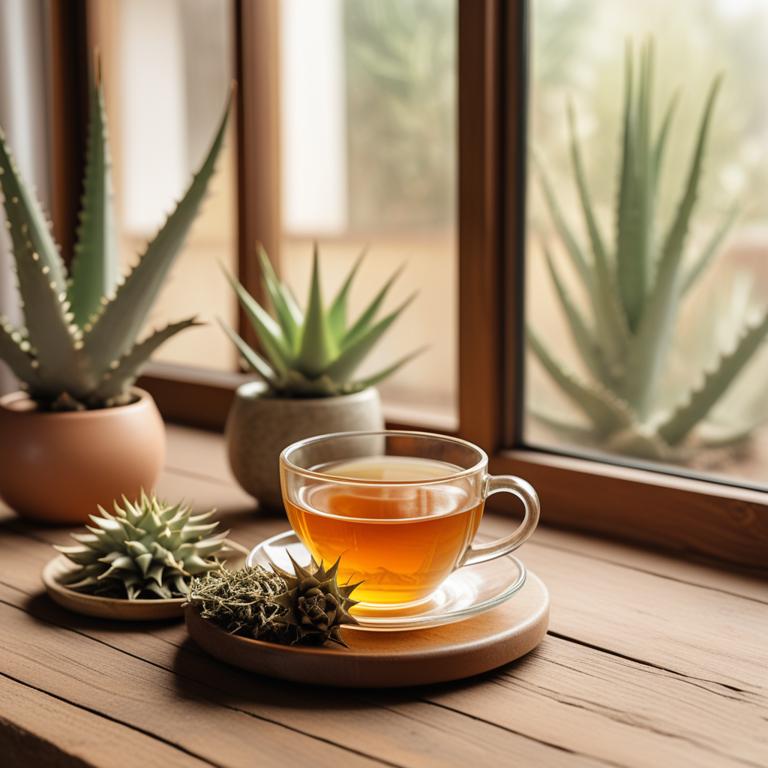
Aloe barbadensis teas contains several bioactive constituents that help with fungal skin infections.
The tea is rich in aloin, a compound that has antimicrobial properties, which can inhibit the growth of fungi such as Candida. The tea also contains aloe-emodin, a compound that has anti-inflammatory properties, which can reduce redness and swelling associated with fungal skin infections. Additionally, the tea contains acemannan, a polysaccharide that can stimulate the immune system to fight off fungal infections.
Aloe-emodin and aloin also have antifungal properties, which can help to eliminate fungal pathogens from the skin.
- Get 1 cup of water and bring it to a boil.
- Take 2 tablespoons of Aloe barbadensis gel and chop it into small pieces.
- Add the chopped Aloe gel to the boiling water and reduce the heat to low.
- Let the mixture simmer for 5-7 minutes, then strain it into a cup.
- Drink the Aloe tea 2-3 times a day to help soothe fungal skin infections.
2. Eucalyptus globulus
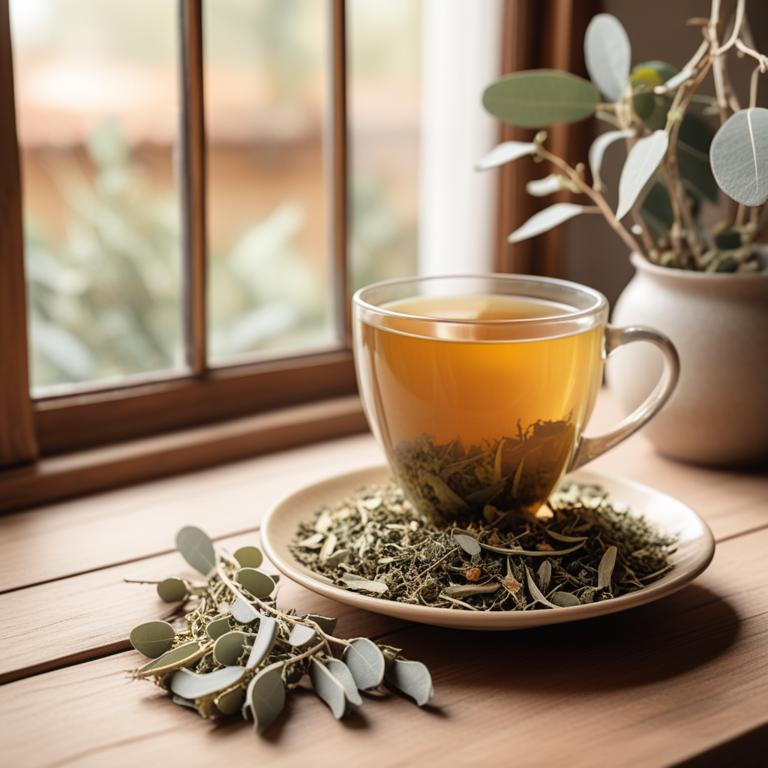
Eucalyptus globulus teas contains bioactive constituents like eucalyptol, limonene, and cineole.
These compounds have antifungal properties, which help combat fungal skin infections such as athlete's foot and ringworm. Eucalyptol, in particular, has been shown to inhibit the growth of fungal cells and reduce inflammation. Limonene has antimicrobial properties, killing bacteria and fungi that can cause infections.
By drinking Eucalyptus globulus tea or applying it topically, the antifungal properties of these compounds can help soothe and heal fungal skin infections.
- Gather 1 cup of fresh eucalyptus leaves or 1 teaspoon of dried eucalyptus leaves.
- Boil 1 cup of water in a pot.
- Add the eucalyptus leaves to the boiling water.
- Reduce heat and let it simmer for 5-7 minutes.
- Strain the tea and drink 1/2 cup, 2-3 times a day to help soothe fungal skin infections.
3. Echinacea purpurea

Echinacea purpurea teas contains the bioactive constituents alkylamides, phenolic acids, and glycosides.
These compounds have anti-inflammatory and antimicrobial properties, which can help combat fungal skin infections. The alkylamides in Echinacea purpurea tea have been shown to inhibit the growth of fungi, such as Candida albicans, which is a common cause of fungal skin infections. The phenolic acids in the tea have antioxidant properties, which can help reduce inflammation and promote healing of the skin.
The glycosides in Echinacea purpurea tea can also help stimulate the immune system, which can aid in fighting off fungal infections.
- Gather 1 cup of Echinacea purpurea flowers, dried and crushed.
- Measure 1 tablespoon of crushed flowers per 1 cup of boiling water.
- Heat water in a pot and bring to a boil.
- Add crushed flowers to the boiling water and let steep for 5-7 minutes.
- Strain the tea and let it cool before drinking 2-3 cups per day.
4. Hypericum perforatum
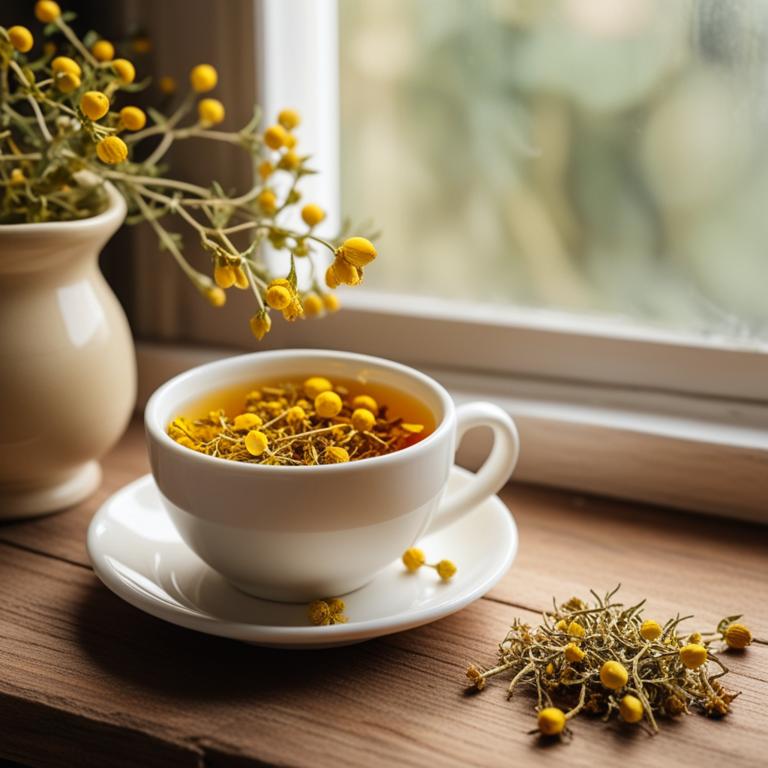
Hypericum perforatum teas contains active constituents like hyperforin and hypericin.
These compounds have antimicrobial and antifungal properties, which can help combat fungal skin infections. The antifungal properties of hyperforin specifically inhibit the growth of fungi, while hypericin has phototoxic effects that can kill fungi upon exposure to sunlight. This combination can help reduce the severity of fungal skin infections, such as athlete's foot and ringworm.
The antimicrobial properties of Hypericum perforatum teas also help prevent bacterial infections from developing in the skin.
- Gather ingredients: 1 cup of fresh Hypericum perforatum flowers, 1 cup of boiling water, and a heat-resistant cup.
- Measure 1 tablespoon of fresh Hypericum perforatum flowers and add to the heat-resistant cup.
- Pour 1 cup of boiling water over the flowers in the cup.
- Let it steep for 5-7 minutes, then strain the liquid using a fine-mesh sieve or cheesecloth.
- Drink 1/2 cup of the Hypericum perforatum tea, 3 times a day, for fungal skin infection treatment.
5. Aloe vera
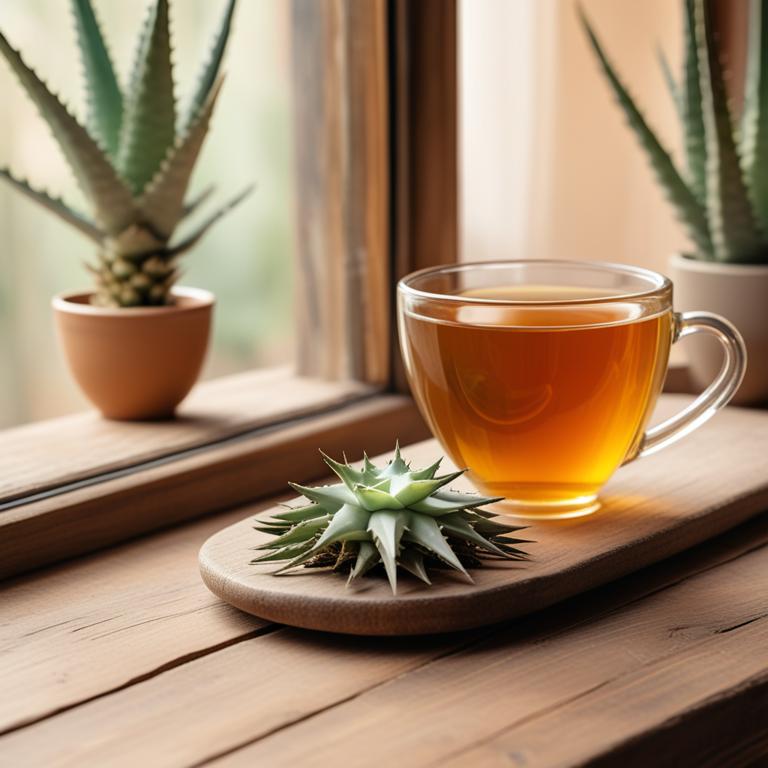
Aloe vera teas contains biologically active constituents like aloin, aloe-emodin, and anthraquinones, which have antifungal properties.
These compounds help combat fungal skin infections by inhibiting the growth of fungi and reducing inflammation. Aloe vera's anti-inflammatory properties also soothe and calm irritated skin, reducing redness and discomfort. The antioxidants present in aloe vera teas, such as vitamins A, C, and E, help protect the skin from damage caused by free radicals, which can exacerbate fungal infections.
By reducing inflammation and protecting the skin, aloe vera teas can help promote a healthy environment for the skin to heal from fungal infections.
- Gather 1 cup of aloe vera gel, 1 cup of water, and a tea infuser or a piece of cheesecloth.
- Cut the aloe vera leaf to get the gel, then strain it to remove any remaining pulp.
- Mix the aloe vera gel with water in a saucepan, then bring it to a simmer on low heat.
- Let the mixture simmer for 10-15 minutes, then strain it into a cup using a tea infuser or cheesecloth.
- Drink 1/2 cup of the aloe vera tea 2-3 times a day to help soothe fungal skin infections.
6. Calendula officinalis
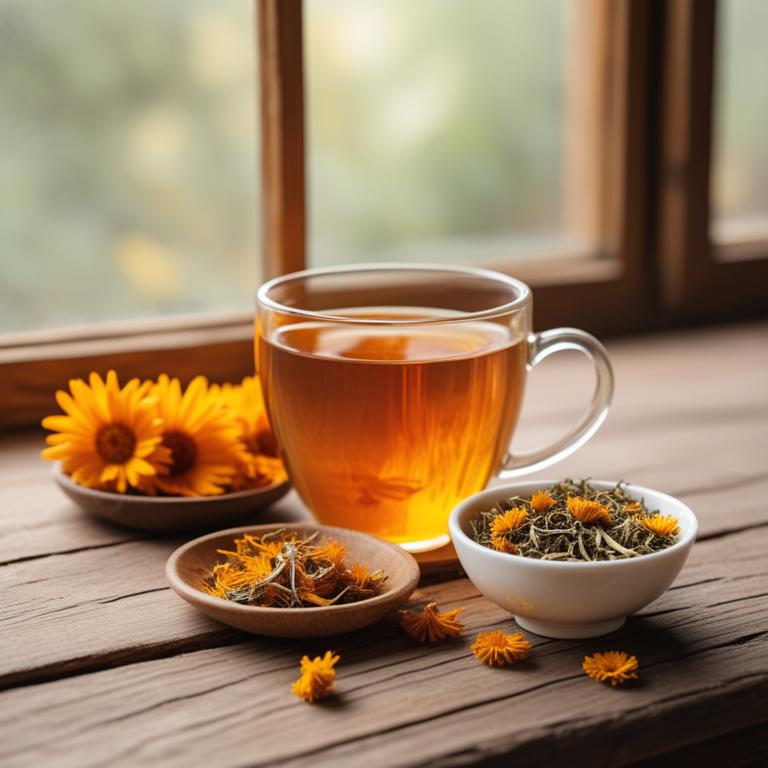
Calendula officinalis teas contains carotenoids, flavonoids, and triterpenoid saponins.
These bioactive constituents have anti-inflammatory and antifungal properties, which help to reduce redness and swelling associated with fungal skin infections. The saponins in Calendula officinalis teas have been shown to inhibit the growth of fungi, such as Candida albicans, by disrupting their cell membranes. The flavonoids, including quercetin and kaempferol, have antioxidant properties that help to protect the skin from damage caused by free radicals.
By using Calendula officinalis teas, the antifungal and anti-inflammatory properties can help to soothe and heal the skin affected by fungal infections.
- Gather 1 cup of dried Calendula officinalis flowers.
- Boil 1 cup of water and let it cool for 5 minutes.
- Add 1-2 tablespoons of dried Calendula flowers to the cooled water.
- Steep the mixture for 5-7 minutes, then strain it using a cheesecloth or a fine-mesh sieve.
- Drink 1 cup of the tea 2-3 times a day to help soothe fungal skin infections.
7. Silybum marianum
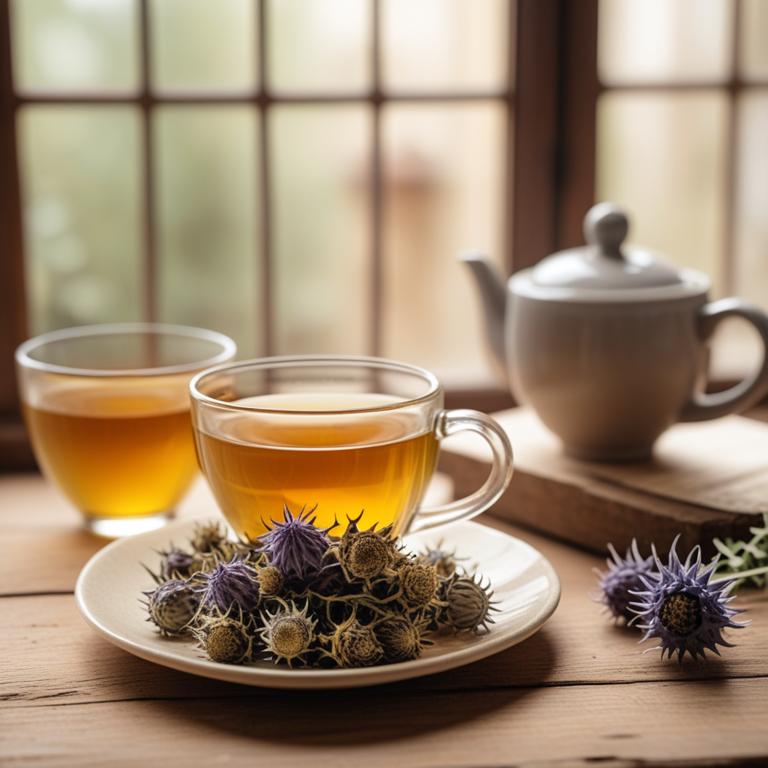
Silybum marianum teas contains silymarin, a bioactive compound that has anti-inflammatory and antimicrobial properties.
Silymarin helps to reduce inflammation and fight off fungal infections on the skin by inhibiting the growth of fungal cells. The flavonoids and lignans present in silymarin also exhibit antioxidant activity, which helps to protect the skin from oxidative stress caused by fungal infections. The antifungal properties of silymarin can help to combat fungal skin infections such as ringworm, athlete's foot, and dermatophytosis.
By reducing inflammation and fighting off fungal cells, silymarin in Silybum marianum teas can help to alleviate symptoms and promote healing of fungal skin infections.
- Gather 1 cup of dried Silybum marianum flowers and leaves.
- Measure 1 tablespoon of dried flowers and leaves and place them in a tea infuser or a heat-resistant cup.
- Pour 1 cup of boiling water over the Silybum marianum mixture and let it steep for 5-7 minutes.
- Strain the tea into another cup and discard the solids. Let it cool to a comfortable temperature.
- Drink 1 cup of the tea 2-3 times a day for 1 week as a potential treatment for fungal skin infections.
8. Lavandula angustifolia

Lavandula angustifolia teas contains bioactive constituents like linalool and linalyl acetate, which have antifungal and anti-inflammatory properties.
These compounds help to reduce inflammation and prevent the growth of fungi on the skin, making it a potential remedy for fungal skin infections. The antifungal properties of linalool and linalyl acetate inhibit the activity of fungal enzymes, thereby preventing the spread of the infection. Additionally, the anti-inflammatory properties of these constituents help to soothe and calm the skin, reducing redness and discomfort.
By addressing both the fungal infection and the inflammatory response, Lavandula angustifolia teas may help to promote healing and reduce the severity of fungal skin infections.
- Gather 1 cup of dried Lavandula angustifolia leaves.
- Boil 1 cup of water in a pot.
- Add 2 tablespoons of dried Lavandula angustifolia leaves to the boiling water.
- Let it steep for 5-7 minutes, then strain the mixture.
- Drink 1/2 cup of the tea, 2-3 times a day, to help soothe fungal skin infections.